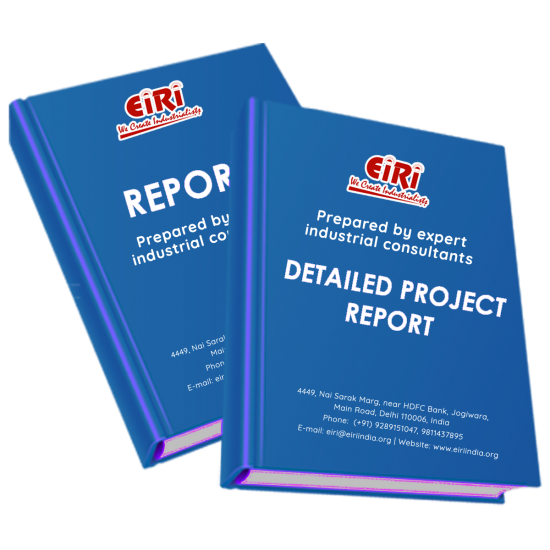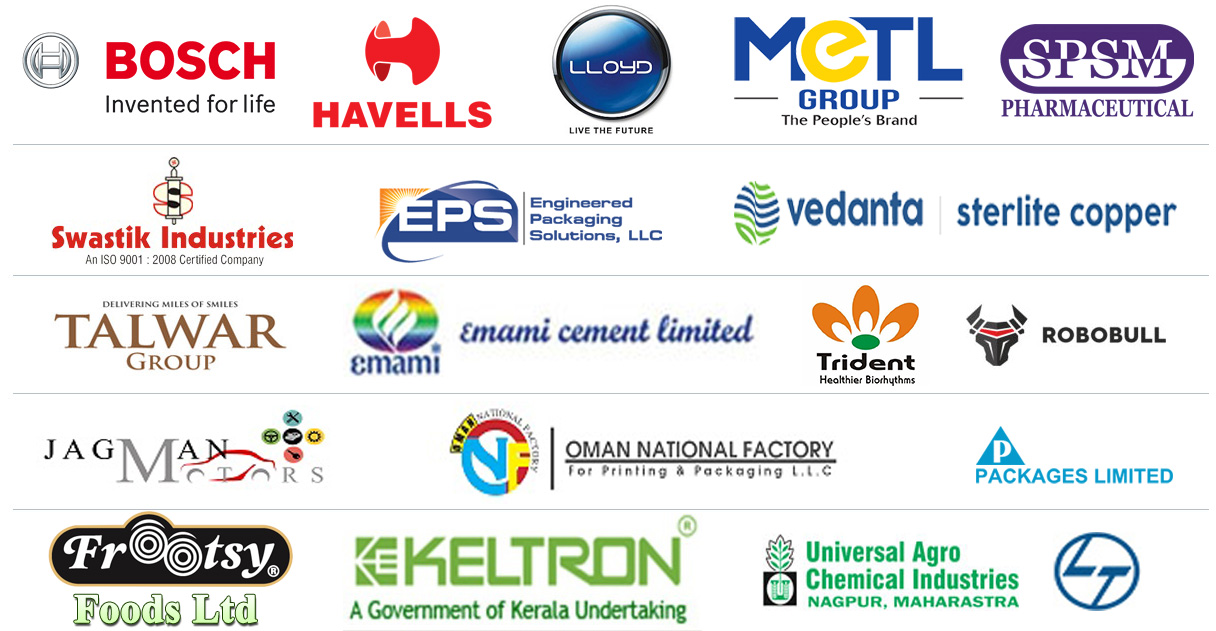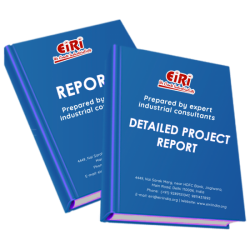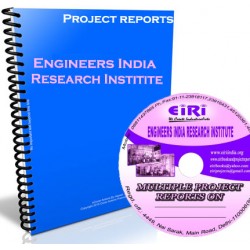Detailed Project Report on quartz powder from quartz rock

- More than 40 years of experience
- Managed by expert industrial consultants
- ISO 9001-2015 Certified
- Registered under MSME, UAM No: DL01E0012000
- 24/5 Research Support
Get your quesries resolved from an industry expert. Ask your queries before report or book purchase. - Custom Research Service
Speak to the our consultant to design an exclusive study to serve your research needs. - Quality Assurance
All reports are prepared by highly qualified consultants & verified by a panel of experts. - Information Security
Your personal & confidential information is safe & secure.
QUARTZ POWDER FROM QUARTZ ROCK
[CODE NO. 2034]
The term 'quartz' is often referred to as a synonym for silica. Silica (SiO2) is one of the ubiquitous materials in the earth's crust. Quartz, quartz crystals, quartzite, silica sand, sand (others) and moulding sand are all coined together in one generic name 'silica minerals'. This is because all these commodities are essentially crystalline silicon dioxide (SiO2) with variations mostly related to their crystalline structure and presence of minor or trace impurities. Silica occurs in several forms giving rise to different varieties.
Crystalline Varieties.
The important varieties of crystalline quartz are vein quartz (massive crystalline quartz); milky quartz (white, translucent to opaque); ferruginous quartz (containing brown limonite and red haematite and almost opaque); aventurine quartz (containing glistening flakes of mica or haematite); cat's eye (opalescent greenish quartz with fibrous structure); rock crystal (clear, colourless, well-crystallised transparent quartz); amethyst (clear-purple or violet-blue), transparent quartz; rose quartz; smoky quartz; etc. Occurrences of massive crystalline quartz in veins or pegmatites have been recorded in almost all the states.
Clastic or Granular Varieties.
These varieties include sand consisting largely of unconsolidated quartzose grains (0.06 mm to 2 mm diameter), gravel consisting largely of unconsolidated coarse quartzose grains or pebbles (2 mm to 8 mm in diameter), sandstone and quartzite. The occurrences are reported from Andhra Pradesh, Bihar, Delhi, Haryana, Karnataka, Kerala, Madhya Pradesh, Rajasthan,Tamil Nadu, Uttar Pradesh, etc. The silica sand from Naini area in Allahabad district, Uttar Pradesh is of a very high quality.
Cryptocrystalline Varieties
This group includes chalcedony, agate, jasper, onyx, flint and chert. These varieties appear noncrystalline (amorphous) in hand specimens, but under microscope show double refraction which reveals their concealed crystalline nature. These varieties are reported from Gujarat, Uttar Pradesh, Tamil Nadu, Andhra Pradesh, Maharashtra, Madhya Pradesh, Karnataka and Punjab. The most important occurrences of agate are in Ratnapur, Rajpipla area and further west between Tapi and Narmada rivers in Bharuch district, Gujarat, where it is found as pebbles in varying sizes associated with clay washed down by the river flow. Other occurrences of economic importance are reported from Amravati, Aurangabad, Buldhana, Chandrapur, Nashik and Pune districts in Maharashtra; beds of Krishna and Godavari rivers in Andhra Pradesh; Dumka district in Jharkhand; Dhar, Mandsaur, Sihore and Shahdol districts in Madhya Pradesh; and Kachchh district in Gujarat.
Silica. The most common occurrence of silica (qv) is in the form of quartz. Other forms which are found in nature are tridymite, cristobalite, vitreous silica, cryptocrystalline forms (usually as pebbles in chalk), hydrated silica, and diatomite. The principal sources of silica used in the ceramic industry are the sandstones, quartzites, and sands. Quartzites, often called ganister, are firmly consolidated sandstones, whereas sandstones are rather lightly bonded quartz grains or sands.
Silica is the primary ingredient in glass and is usually obtained from high purity sandstones or quartzites by crushing and grinding, or from high-grade sand deposits. The term glass sand may refer to a deposit of sand or, more commonly it is used to refer to the sand after it has been beneficiated from sandstones, quartzites, or natural sands.
Flint or potter's flint in the strictest usage refers to flint pebbles usually occurring in calcareous or chalk deposits. It is a microcrystalline form of silica with a small amount of combined water. More generally, flint is used to designate either the true flint or quartz.
COST ESTIMATION
Plant Capacity 4800.00 Ton/day
Land & Building (15 Acres) Rs. 17.35 Cr
Plant & Machinery Rs. 11.90 Cr
W.C. for 1 Month Rs. 26.00 Cr
Total Capital Investment Rs. 55.92 Cr
Rate of Return 39%
Break Even Point 42%
INTRODUCTION
PROPERTIES
USES AND APPLICATION
ANALYSIS AND APPLICATION OF QUARTZ POWDER
B.I.S. SPECIFICATIONS
GRADES OF QUARTZ POWDER
RESERVES/RESOURCES OF QUARTZ & SILICA SAND
MARKET SURVEY
PRODUCTION STATISTIES OF QUARTZ
DETAILED EXPORT DATA OF QUARTZ POWDER
DETAILED IMPORT DATA OF QUARTZ POWDER
PRESENT MANUFACTURERS OF QUARTZ POWDER
ADDRESSES OF INTERNATIONAL BUYERS
RAW MATERIALS
PROCESS OF MANUFACTURE OF QUARTZ POWDER
PROCESS FLOW SHEET FOR QUARTZ POWDER
PROCESS IN DETAILS FOR QUARTZ POWDER
EXPOSURE LEVELS OF DUST IN QUARTZ MANUFACTURING UNITS
MATERIAL SAFETY DATA SHEET FOR QUARTZ
SUPPLIERS OF RAW MATERIALS
SUPPLIERS OF PLANT AND MACHINERY
SUPPLIERS OF PLANT AND MACHINERY (GLOBAL)
QUARTZ POWDER PRODUCTION LINE
APPENDIX – A :
1. COST OF PLANT ECONOMICS
2. LAND & BUILDING
3. PLANT AND MACHINERY
4. FIXED CAPITAL INVESTMENT
5. RAW MATERIAL
6. SALARY AND WAGES
7. UTILITIES AND OVERHEADS
8. TOTAL WORKING CAPITAL
9. COST OF PRODUCTION
10. PROFITABILITY ANALYSIS
11. BREAK EVEN POINT
12. RESOURCES OF FINANCE
13. INTEREST CHART
14. DEPRECIATION CHART
15. CASH FLOW STATEMENT
16. PROJECTED BALANCE SHEET
How to Make Project Report?
Detailed Project Report (DPR) includes Present Market Position and Expected Future Demand, Technology, Manufacturing Process, Investment Opportunity, Plant Economics and Project Financials. comprehensive analysis from industry covering detailed reporting and evaluates the position of the industry by providing insights to the SWOT analysis of the industry.
Each report include Plant Capacity, requirement of Land & Building, Plant & Machinery, Flow Sheet Diagram, Raw Materials detail with suppliers list, Total Capital Investment along with detailed calculation on Rate of Return, Break-Even Analysis and Profitability Analysis. The report also provides a birds eye view of the global industry with details on projected market size and then progresses to evaluate the industry in detail.
We can prepare detailed project report on any industry as per your requirement.
We can also modify the project capacity and project cost as per your requirement. If you are planning to start a business, contact us today.
Detailed Project Report (DPR) gives you access to decisive data such as:
- Market growth drivers
- Factors limiting market growth
- Current market trends
- Market structure
- Key highlights
Overview of key market forces propelling and restraining market growth:
- Up-to-date analyses of market trends and technological improvements
- Pin-point analyses of market competition dynamics to offer you a competitive edge major competitors
- An array of graphics, BEP analysis of major industry segments
- Detailed analyses of industry trends
- A well-defined technological growth with an impact-analysis
- A clear understanding of the competitive landscape and key product segments
Need Customized Project Report?
- Ask for FREE project related details with our consultant/industry expert.
- Share your specific research requirements for customized project report.
- Request for due diligence and consumer centric studies.
- Still haven't found what you're looking for? Speak to our Custom Research Team
About Engineers India Research Institute:
Note: We can also prepare project report on any subject based on your requirement and country. If you need, we can modify the project capacity and project cost based on your requirement.
Our Clients

Our Approach
- Our research reports comprehensively cover Indian markets (can be modified as per your country), present investigation, standpoint and gauge for a time of five years*.
- The market conjectures are produced on the premise of optional research and are cross-accepted through associations with the business players
- We use dependable wellsprings of data and databases. What's more, data from such sources is handled by us and incorporated into the report
Why buy EIRI reports?
- Our project reports include detailed analysis that help to get industry Present Market Position and Expected Future Demand.
- Offer real analysis driving variables for the business and most recent business sector patterns in the business
- This report comprehends the present status of the business by clarifying a complete SWOT examination and investigation of the interest supply circumstance
- Report gives investigation and top to bottom money related correlation of real players/competitors
- The report gives gauges of key parameters which foresees the business execution























